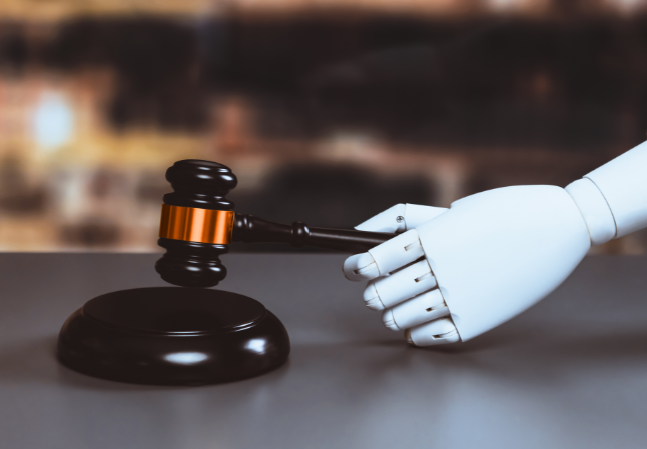Welcome! Save 30% on all CLE, CPE, and Professional Skills webinars, plus 15% off any annual pass with code HOLIDAY25
About the Course
Introduction
This CLE webinar will cover the patenting of AI-assisted inventions. The panel will examine the recently issued United States Patent and Trademark Office (USPTO) Guidance and what is expected for an AI-assisted invention to be patent eligible. The panel will discuss the inventorship analysis and what it may mean to meet the significant contribution requirement. The panel will offer best practices for handling AI-assisted inventions.
Description
On Feb. 13, 2024, the USPTO issued "Inventorship Guidance for AI-assisted Inventions." The Guidance for inventions developed using AI stated that AI-assisted inventions are not categorically unpatentable. The Guidance took effect immediately.
The Guidance establishes standards that create potential new obligations for patent counsel. For an AI-assisted invention to be patent eligible, a natural person must have made a significant contribution to the invention. The Guidance lays out that humans must contribute to every claim in the patent, and "inventorship is improper in any patent or patent application that includes a claim in which at least one natural person did not significantly contribute to the claimed invention." The Guidance is in line with the Agency's policy that AI itself cannot be listed as an inventor.
Counsel must evaluate whether the person involved meets the level of significant contribution and ascertain whether the person's purported significant contribution was made by AI. Patent counsel should keep the new Guidance in mind when drafting or challenging AI-assisted patents.
Listen as our experienced panel of patent attorneys examines the new USPTO Guidance and patent eligibility of AI-assisted inventions in view of this guidance. The panel will discuss the inventorship analysis and the significant contribution requirement based on this guidance. The panel will offer suggested best practices for dealing with AI-assisted inventions.
Presented By

Ms. Ettinger counsels life sciences clients on a variety of intellectual property matters. She excels at due diligence studies, loss of exclusivity analyses, and agreement drafting in connection with buy- and sell-side transactions and collaborations for her clients, which range from preclinical biotechnology companies to large clinical pharmaceutical companies. Ms. Ettinger regularly advises on Hatch-Waxman issues, biosimilars strategy, and litigation and post-grant proceedings, such as inter partes reviews. She also manages the worldwide prosecution of numerous life sciences patent portfolios. Ms. Ettinger has extensive experience counseling clients in IP matters in areas including gene editing, immunotherapies, regenerative medicine, rare diseases, pharmaceutical formulations, genetically modified plants and seeds, enzyme and other large-molecule technology, and small-molecule chemistry. She routinely works with the firm’s corporate team to counsel international corporations in preparing their intellectual property portfolios for U.S. cross-border securities transactions.
.jpg)
Mr. Pratt primarily focuses on the prosecution and litigation of software, mechanical and medical device patents in addition to trademark registration. He assists technology-driven clients with developing effective strategies to maximize the protection that intellectual property can provide to companies both large and small. Mr. Pratt also provides counsel for companies looking to broaden their IP portfolio to cover both where the client currently is and where the client is looking to go in the future. He has drafted and prosecuted patent applications in a variety of software-focused technology areas, including AI, machine learning algorithms, user interfaces, video coding, VR systems, networks, blockchain and various other applied algorithms dealing with areas including weather detection, medical devices, personal identification, market forecasting, automobile navigation and bug detection. Mr. Pratt also provides assistance with infringement analysis for litigation and due diligence in connection with MA&s.

With an IP practice encompassing mechanical devices, remote monitoring and control systems, telecommunications systems, e-commerce services and financial services, Mr. Wood advises clients on complex issues of claim construction, infringement, and validity in both patent litigation and post-grant review proceedings. He also provides advice to clients on patent portfolio management and strategy. Mr. Wood’s clients come from a broad array of technology sectors and include medical device manufacturers, consumer goods retailers, financial institutions, computer and software technology companies, and e-commerce technology providers. He has significant patent litigation experience in the Eastern District of Texas, the District of Delaware, the Eastern District of Virginia, and before the International Trade Commission. He has also participated in several Federal Circuit appeals. Additionally, Mr. Wood has significant patent prosecution and post-grant proceeding experience with the USPTO.
-
This 90-minute webinar is eligible in most states for 1.5 CLE credits.
-
Live Online
On Demand
Date + Time
- event
Tuesday, April 23, 2024
- schedule
1:00 p.m. ET./10:00 a.m. PT
- Patentability of AI-assisted inventions
- Naming inventors
- Significant contribution
- Duties owed to the USPTO
- Duty of disclosure
- Duty of reasonable inquiry
- Priority claims to prior-filed applications
- Examples
- Best practices
The panel will review these and other key issues:
- What does the new Guidance mean for patent counsel seeking protection of inventions that use AI in their innovation?
- What assistance does the new Guidance provide for determining significant contribution?
- What strategies should counsel employ when evaluating significant contribution?
Unlimited access to premium CLE courses:
- Annual access
- Available live and on-demand
- Best for attorneys and legal professionals
Unlimited access to premium CPE courses.:
- Annual access
- Available live and on-demand
- Best for CPAs and tax professionals
Unlimited access to premium CLE, CPE, Professional Skills and Practice-Ready courses.:
- Annual access
- Available live and on-demand
- Best for legal, accounting, and tax professionals
Unlimited access to Professional Skills and Practice-Ready courses:
- Annual access
- Available on-demand
- Best for new attorneys




